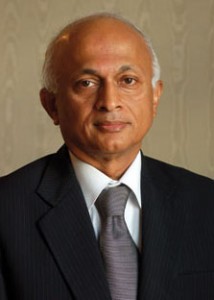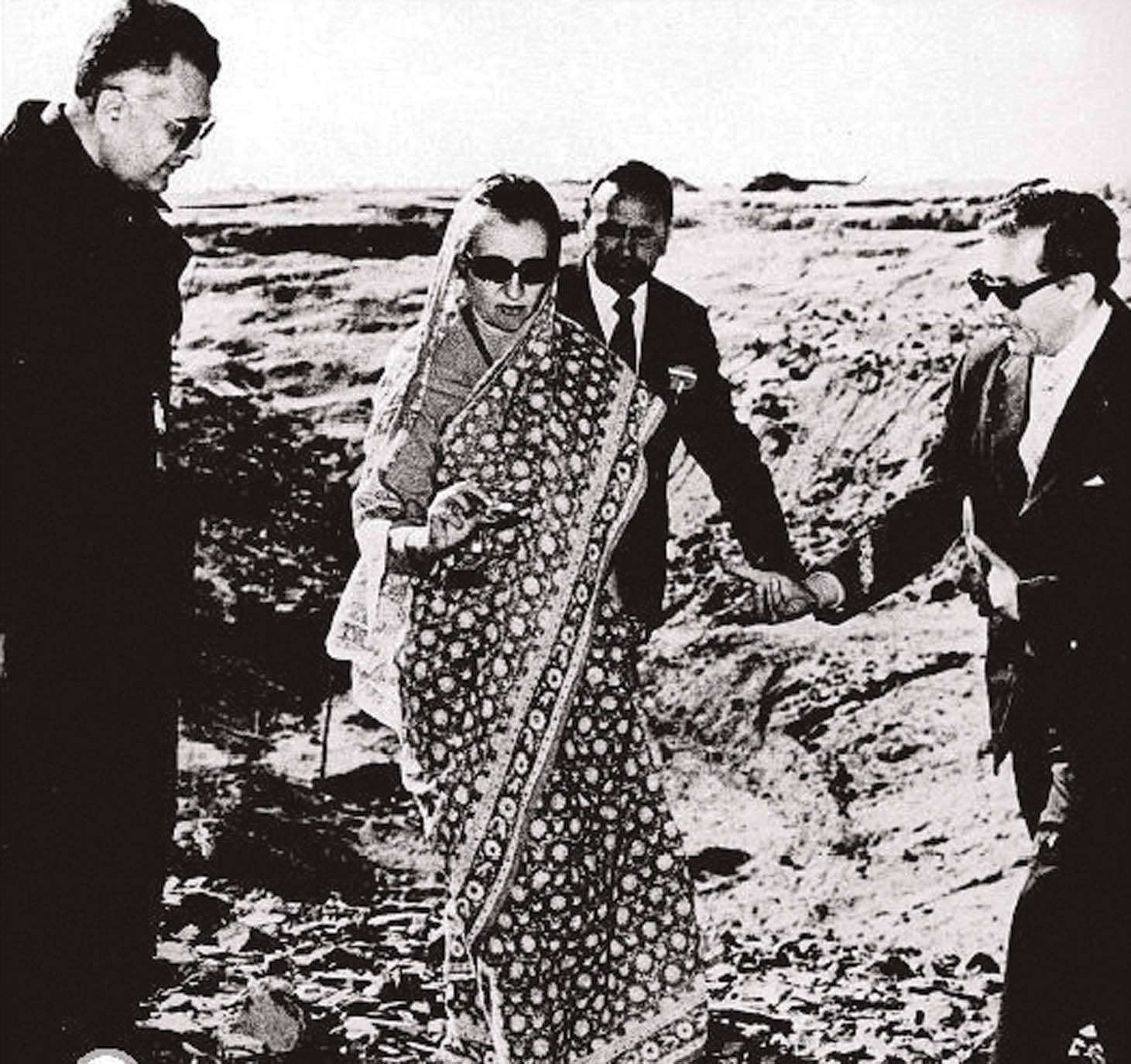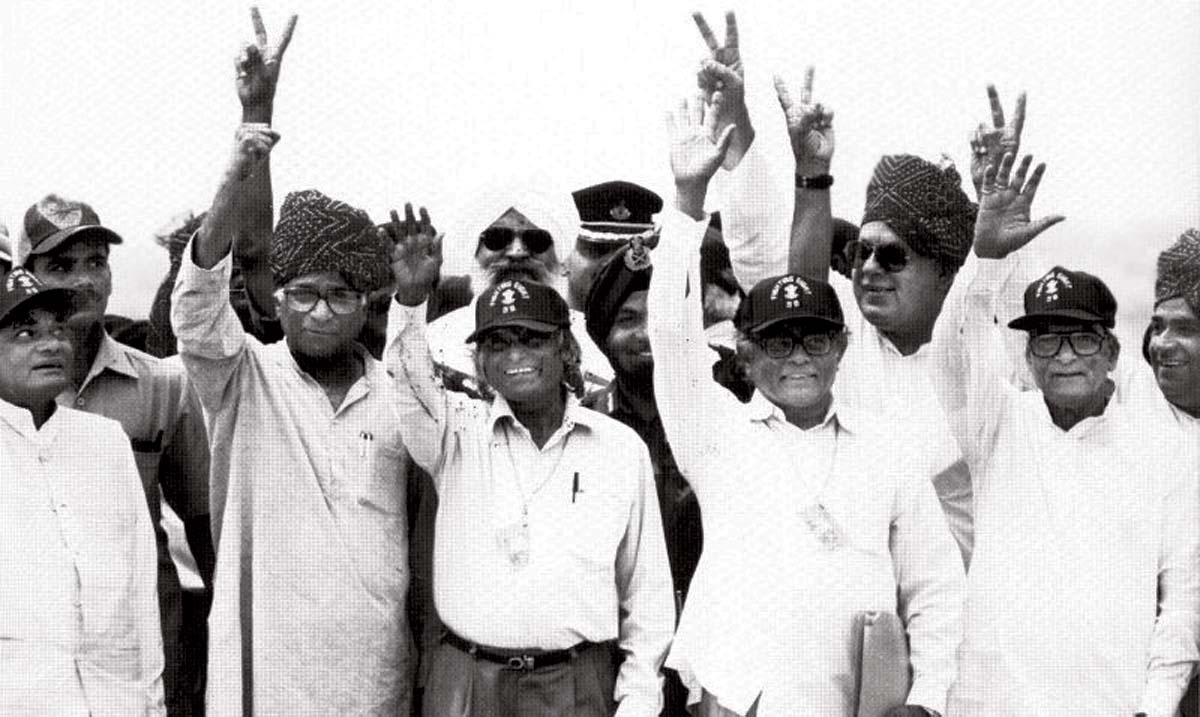|
 India has been seeking exemptions from these regimes particularly to obtain nuclear
technology for power generation but the declaration, carefully made at India’s
premier think tank, the Institute for Defence and Strategic Analyses (IDSA), sent
some pleasant shock waves around the world.
India has been seeking exemptions from these regimes particularly to obtain nuclear
technology for power generation but the declaration, carefully made at India’s
premier think tank, the Institute for Defence and Strategic Analyses (IDSA), sent
some pleasant shock waves around the world. India has opposed these regimes,
set up in the form of Nuclear Suppliers Group (NSG) in 1974 against India’s first
nuclear test the same year. India has declined to sign these regimes, describing
them as “discriminatory,” but also has never violated the provisions or spirit
of either the NSG, or the Nuclear Non-Proliferation Treaty (NPT) which took force
in 1970, or the Missile Technology Control Regime (MTCR) created in 1987. India
has followed a home-grown, indigenous nuclear and missile programmes as a deterrent
first for China, which exploded its first nuclear bomb in 1964, and then Pakistan
which declared its intent in 1972 to go for the atomic bomb.
| India declined to sell nuclear
technology to Iran, Iraq and Libya | | By
Gulshan Luthra | | New
Delhi. India declined to sell nuclear technology to Iran, Iraq and Libya. All
the three countries offered “huge” sums in the early 1980s, but the
then Prime Minister Indira Gandhi said a firm “NO.” Iran asked
for nuclear technology as well as a military training school for its officers
somewhere in India, again offering substantial monetary compensation for both,
but Mrs Gandhi said that India would not play its friends in the Gulf against
each other. India had in fact been training Iraqi air force pilots, thanks
to the commonality of the Soviet aircraft with the two countries. The defence
cooperation had begun well before the outbreak of the Iran-Iraq war, but Indian
instructors, their number reaching 60 at one time, had no mandate except to continue
the ongoing training programme in accordance with the relevant agreements. Iran
and Iraq were then in the thick of their long, 8-year war, which cost each side
heavy casualties and meant no victory. Mrs Gandhi’s special envoy for the
Gulf, Mr Romesh Bhandari was then shuttling between the Iranian and Iraqi capital
of Teheran and Baghdad to forge peace. Iraq in fact was supposed
to host the Non Aligned Movement (NAM) summit in 1983, but as Iran was not willing
to participate in it in Baghdad, where a new conference hotel – Al Rasheed
– had been built by Swedish companies, the venue was moved to New Delhi at
Mr Bhandari’s suggestion. Libyan leader Col Muammar Gaddafi also wanted
nuclear technology, and when India refused, he hassled the Indian companies and
workers to pressure Mrs Gandhi. She did not budge. Many Arab leaders in
fact used to regard Mrs Indira Gandhi as "the only man" among the Asian
leaders, thanks to her statesmanship and the direction she steered the Non Aligned
Movement into during her life. In 1981, UAE President Shaikh Zayed reportedly
expressed his appreciation of Mrs Gandhi on these very lines during her visit
to Abu Dhabi in May 1981. I was a member of her media delegation,
and was told of this observation by a senior UAE minister. There were similar
sentiments about her in Egypt, Syria, Algeria, Bahrain, Kuwait, Oman and several
other Arab countries which I visited periodically over the years. | |
| Mr Mathai’s statement apparently indicates a nuclear
-confident India, capable of deterring a nuclear attack, and if it happens, then
of massively retaliating, or inflicting unacceptable damage on the enemy/enemies.
Notably, the Foreign Secretary’s declaration came around the time when
India inducted its first operational nuclear propelled INS Chakra submarine, successfully
tested a 5,500km range ICBM (Inter Continental Ballistic Missile) and placed a
sophisticated Synthetic Aperture Radar satellite in space. India is also conducting
final system checks on its indigenous nuclear propelled nuclear weapon submarine
INS Arihant for launch in 2013. Apparently, all the three Services, the
Army, Navy and Air Force have placed appropriate assets with India’s Strategic
Forces Command, including aircraft, missiles and ships, first for deterrence and
second for retaliation while the DRDO has been able to demonstrate limited anti-missile
missile capability as well. The technological maturity in India’s strategic
programmes is there, and the much desired nuclear triad of weapons launch from
Air, Land, Sea and Sub-surface or underwater, is just around. Joining
the World Mr Mathai told this writer on the sidelines of the IDSA event
that despite the earlier opposition to India’s strategic programmes, “most of
the countries in the world, and in the NSG are now comfortable with us, and so
are we with them.” “With our programmes aimed at deterrence, and eventual
global nuclear disarmament, we have every reason to be a part of the NSG, and
other regimes including the Australia Group (AG), Wassenaar Arrangement (WA) and
the Missile Technology Control Regime (MTCR).” The Foreign Secretary’s
declaration was calibrated by the Disarmament and International Security Affairs
(DISA) division of the External Affairs Ministry, ably headed by Joint Secretry
Bala Venkatesh Varma. India’s Clean Non Proliferation Record On
18 May 1974, I stumbled upon information that India had conducted a nuclear test.
I had gone to a friend’s house for breakfast and the report came by a fluke to
me. I had just become a correspondent with UNI news agency. I mentioned
the report to a senior colleague who asked me not to spread rumours. A little
later, Prime Minister Indira Gandhi announced the “Peaceful Nuclear Explosion
(PNE)” but without giving details. Mr GG Mirchandani, the Chief Editor,
encouraged me to follow the development, and I had three reports in succession,
giving the location – Pokhran in Rajasthan – how the Indian scientists were monitoring
the test site, and the first international reaction when Canada withdrew nuclear
cooperation with India, all within 10 days or so of the so-called PNE. UNI
got quoted worldwide from The New York Times and Newsweek to The Times and Asahi
Shimbun. I was rewarded with operational freedom, and by 1980, posted to the Middle
East with the prize assignment of a Foreign Correspondent and Chief of Bureau
with diplomatic-level allowances. But India’s nuclear story for me
didn’t end there. India says NO to Iran, Iraq and Libya Three
countries at least I know of, Libya, Iraq and Iran, sought nuclear assistance
from India to which Mrs Indira Gandhi said a firm “NO.” Libya’s
maverick strongman Col Muammar Gaddafi tried to push an agreement in the form
of “processing technology for power generation” without mentioning the
word nuclear. He offered funds and when the Indian Government refused to respond,
he hassled Indian companies and workers in Libya. Both Iran and Iraq also
offered “huge” sums, something I confirmed again recently from well-placed
sources while collecting data for a book I am doing. India and Iraq had
strong military ties in the form of training, and at one time, there were about
60 Indian Air Force (IAF) officers imparting training to their Iraqi friends on
Soviet supplied aircraft, common to both the countries. One of the Indian instructors
was also given the highest possible award by President Saddam Hussein. 
The
Iranians also offered funding, and asked for a military training facility for
Iranian officers in India. For some time there was a bit of tension even in normal
trade, and once, during the visit of an Indian delegation to Teheran, the Iranians
put up some tough conditions for normal bilateral trade and New Delhi went to
the extent of recalling an oil tanker which was otherwise ready to load oil. Political
intervention prevailed fortunately, and India and Iran continued to work with
mutual goodwill. In fact, later in 1987, Qatar took the initiative to offer gas
to India at lucrative terms, and a couple of years later, Iran followed with a
similar offer. India failed to take advantage. I visited both Baghdad and
Teheran several times, mostly with Mr Romesh Bhandari, Mrs Gandhi’s chosen
envoy for brokering peace between the two neighbours. In 1983, Baghdad was to
host the non Aligned Movement (NAM) summit, but as Iranians were not willing to
go there because of the ongoing Iran-Iraq war, it was held in New Delhi. In
an unrelated but interesting anecdote, my name did not figure in the list of the
Indian delegation telexed to the Iraqi Foreign Ministry in advance, but I was
there in the official aircraft. The protocol officer game me "Imargancy Visa."
The Iraqis were also great hosts always. Mrs Gandhi’s mandate nonetheless
was clear: India will neither supply nuclear technology or weapons nor play the
two friends (of India) against each other. Iran wanted Indian assistance
in nuclear power generation for a proposed plant in Busher, and at Mrs Gandhi’s
behest, Indian diplomats politely declined the request. The Iranians in
fact took the message with maturity, but Saddam Hussein was upset, and when Mrs
Gandhi died in 1984, he sent a junior minister to her funeral and let it be known.
I was surprised when a Bahraini friend, Nabeel al Hamar – later Information
Minister – mentioned his (Saddam’s) anger to me even before the Iraqi
representative had left for New Delhi. Nabeel had just returned from a visit to
Baghdad. In later years, Indian nuclear scientists did visit the Egyptian
capital of Cairo and Teheran but they were all goodwill visits without any meaningful
exchange of ideas or technology. Mr Mathai, when pressed for updates or
details on India’s non proliferation record, simply said: “It is clean and there
for all to see.” 
Summer Significance By design or otherwise, the summer months
of April and May are significant for India’s strategic milestones. India
conducted the first test on May 18, 1974, and the second on May 11, 1998 in what
are called Pokhran-I and Pokhran-II. In 2012, on April 4th, India formally
inducted its new nuclear-powered attack submarine, INS Chakra, which is on lease
from Russia for 10 years. It does not have nuclear weapons but unlike the earlier
Charlie class avatar of INS Chakra, on lease from 1988 t0 1991 from Russia, it
has no Russian crew on board and possibly, no strings attached on how it is used.
India’s indigenous nuclear powered and nuclear weapon submarine INS Arihant,
now under routine system and weapon checks, is a few months away from deployment.
India’s Defence Research and Development Organisation (DRDO), which has
been spearheading India’s missile programme, is confident and comfortable of both
its offensive and defensive systems, some of which admittedly need perfection,
but are around the required milestones. On April 19th, DRDO successfully tested
5,500 km range Agni-V, a threshold ICBM (Inter Continental Ballistic Missile)
described by DRDO chief Dr VK Saraswat as a “long range” missile. Programme
Director Avinash Chander though told this writer that although there was no directive
from the Government to develop longer range systems, progressive development was
natural to reduce the carrier missile’s weight and increase the warhead load.
Technologically, this enhancement in fact can also mean increase in the range
if required. Indian space scientists have been able to place multiple satellites
in orbit, and the technology would be no different for India’s missile scientists
to develop Agni variants into MIRVs (Multiple Independently-Targetable Re-entry
Vehicles). Also in April, on the 26th, the Indian Space Research Organisation
(ISRO) successfully launched RISAT-II satellite, capable of observing the earth
through clouds and darkness with its sophisticated Synthetic Aperture Radar (SAR)
cameras. All these are significant milestones, and considered through an
integrated approach, a clear manifestation of India’s maturity in missile and
nuclear capabilities. The Pakistan Factor Mrs Indira
Gandhi had got the first test done in 1974, but India’s nuclear weapons programme
was ordered in 1988 by the then Prime Minister Rajiv Gandhi after – repeat after
– India’s external intelligence agency RAW gave him firm inputs that Pakistan
had started making the n-bomb in 1987. India shared the inputs with CIA,
but unfortunately, the then George HW Bush administration chose to ignore it till
the CIA was forced to admit this confirmation before the US Congress in 1990,
apparently with its own additional inputs. Pakistan had declared its intention
for a nuclear bomb in 1972, and sought technological assistance from China and
financial doles from the Middle East in the name of religion by terming it as
an Islamic Bomb. For diplomatic reasons, India delayed the second nuclear test
and conducted it only on 11 May 1998 when the then Prime Minister AB Vajpayee
gave the go-ahead. Pakistan followed immediately, confirming the Indian intelligence
reports of its weapons programme. |